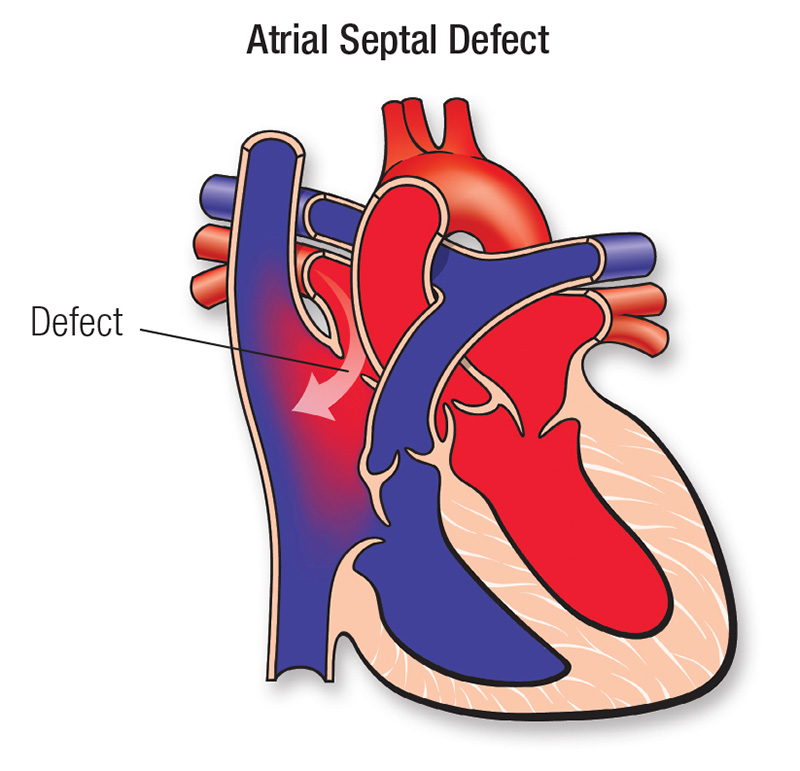
Atrial Septal Defect (ASD)
An atrial septal defect (ASD) is a congenital heart disease in which there is an opening in the wall (the atrial septum) between the heart's two upper chambers (the right and left atria). An ASD is one of the defects referred to as “a hole in the heart”
An ASD allows the oxygenated blood to pass from the left atrium, through the opening in the septum, and into the right atrium, causing the two to mix. This leads to increased blood flow through the right side of the heart and lungs. Over time, this “extra” blood volume stresses the heart and causes the right side of the heart and pulmonary arteries to dilate (become wider). This can eventually lead to heart failure, pulmonary hypertension (high pressure in the lungs) or heart rhythm abnormalities.
Your child's primary care doctor may refer you to us for evaluation. Diagnosis of atrial septal defect may require some or all of these tests:
Some small ASDs close on their own. This often happens before a child turns 2 years old, so we may decide to wait and see whether the atrial septal defect closes on its own.
If the ASD is large, or doesn’t close on its own, additional steps will be required to prevent complications from developing.
Treatment options include:
Device closure:
In many cases, an ASD can be closed during a cardiac catheterization procedure. We will insert a thin tube (catheter) through a large vein in the leg, then guide it up into the heart. A device is then delivered through the catheter to close the hole.
Because each ASD is unique, cardiologists will choose a closure device that is best suited to your child based on the particular features of the hole (size, location, amount of tissue surrounding the hole, etc.). The device will be placed using both ultrasound and x-ray guidance to ensure proper positioning and stability.
Most children will spend one night in the hospital after this procedure, before returning home. They will also need to rest for the next few days, but then can resume normal activity. They will have to take a tablet for the next six months after the procedure.
Open heart surgery:
In cases where the hole is very large, the surrounding tissues are not adequate or the heart anatomy is complex, surgery may be required. Surgeons use stitches or patches to close the hole. After surgery, patients initially recover in the Cardiac Intensive Care Unit and then in the wards as they improve.
Because of enormous strides in medicine and technology, today nearly all children with atrial septal defects go on to lead healthy, productive lives as adults.
After ASD repair, most children recover quickly and don’t experience additional cardiac problems. Children with ASD must see a Paediatric Cardiologist for regular check-ups. Children who have other heart abnormalities will require more extensive follow-up care. We follow patients until they are young adults, coordinating care with the primary care physicians.
